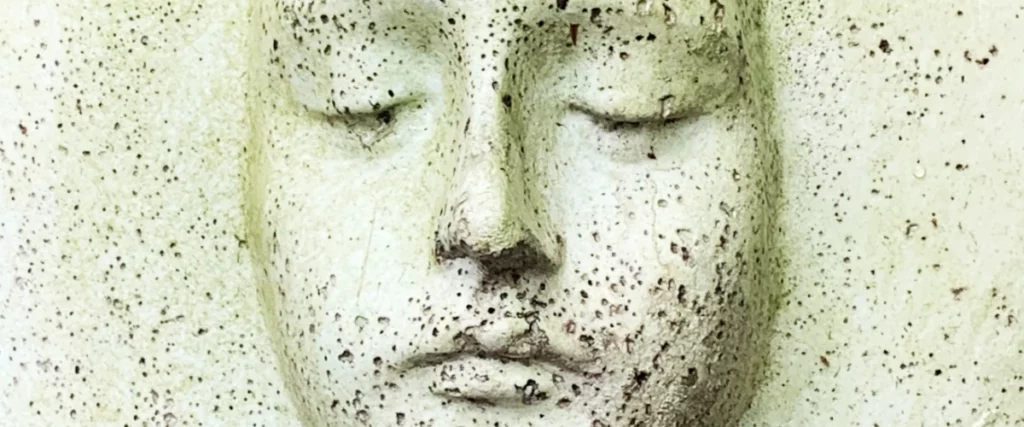
Dissociation and Numbness
Self-Paced Course
This is a digital Self-Paced Course
- Simply purchase and download the zip
- Lifetime access to course material
Download contains:
- 4 video lectures, 3 hours total
- 9 guided meditations, 4 hours total
Overview
One of the primary means of coping with emotional deprivation and poor care in childhood is the “Detached Protector Mode”. It is a core feature and coping mode of dismissing-avoidant attachment. This mode helps us manage pain by withdrawing from it and by making our emotional experience seem less important. That helps us accept situations of mis-attunement, not being comforted, and even endangerment. This is something we learn in childhood. The Detached Protector Mode overlaps greatly with maladaptive day dreaming, dissociation, ‘checking out’, being emotionally unavailable, numbing out, blocking out your feelings, self-gaslighting, and even discomfort with emotional closeness. In this workshop, we will take the position that the detached protector is a ‘functional symptom’ which helped us cope with emotional deprivation as children, but now causes us difficulties as adults. By seeing and feeling the utility and ‘sanity’ of this mode we will move towards letting go of shame associated it. At the same time, to be balanced, we’ll study and acknowledge how the Detached Protector Mode hurts our quality of life and ability to connect with others as adults. In this course we’ll focus on doing experiential work on this mode. This approach is based in the belief that to heal deeply rooted neurosis that experiential work is needed. Simple psycho-education or more superficial interventions like cognitive behavioral therapy don’t work, usually. We will do this work through guided meditation. In this course we’ll do the following exercises/meditations:- Parts work on the detached protector mode (chair work) (Pro-symptom and Anti-symptom positions).
- Mentalizing the Modes Meditation on the detached protector mode.
- Schema repatterning meditation on the ’emotional-inhibition schema’.
- attachment theory
- schema therapy
- ideal parent figure protocol
- coherence therapy
- metacognitive interpersonal therapy
Who is this For
This program is for those of us who...
- have problems with experiencing jealousy of others
- want to engage more authentically with people we are close with
Benefits & Outcomes
These are some of the benefits you will have by the end of the program
Theoretical Understanding
- See how jealousy manifests as a product of the internal working model of attachment.
- Understand the roots of jealousy as originating in maladaptive views of self and the world.
Psychological
- Lessening feelings of jealousy and moving into more secure appreciation of others.
- Healing traits of insecure attachment.
For your relationships
- Relating to others more directly, instead of through the distortions of a jealous mental state.
- Increased calmness to let partners and friends be themselves, brining about more closeness.
Included Files:
Introduction to Dissociation and Numbness |
|
|---|---|
Introduction to Dissociation and NumbnessVideo
|
33 mins |
Brief intro meditationMeditation
|
12 mins |
Perfect Nurturer Reinforcement on needing comfort, safety and protectionMeditation
|
16 mins |
Perfect Nurturer Reinforcement on needing comfort, safety and protectionMeditation
|
14 mins |
Metacognition and Chairwork |
|
Metacognition and ChairworkVideo
|
40 mins |
Chairwork Interview of the Detached Protector ModeMeditation
|
33 mins |
Chairwork Interview of the Detached Protector ModeMeditation
|
25 mins |
The Detached Protector Mode |
|
The Detached Protector ModeVideo
|
67 mins |
Mentalizing the Modes on the Detached Protector ModeMeditation
|
49 mins |
Mentalizing the Modes on the Detached Protector ModeMeditation
|
51 mins |
Schema Repatterning Meditation |
|
Schema Repatterning MeditationVideo
|
32 mins |
Schema Repatterning Meditation on Emotional InhibitionMeditation
|
29 mins |
Schema Repatterning Meditation on Emotional InhibitionMeditation
|
31 mins |
|
|
Frequently Asked Questions
Self-Paced Courses
Payment Questions
Technical Questions
$79
Where did you hear about this Program?
Description
One of the primary means of coping with emotional deprivation and poor care in childhood is the “Detached Protector Mode”. It is a core feature and coping mode of dismissing-avoidant attachment.
This mode helps us manage pain by withdrawing from it and by making our emotional experience seem less important. That helps us accept situations of mis-attunement, not being comforted, and even endangerment. This is something we learn in childhood.
The Detached Protector Mode overlaps greatly with maladaptive day dreaming, dissociation, ‘checking out’, being emotionally unavailable, numbing out, blocking out your feelings, self-gaslighting, and even discomfort with emotional closeness.
In this workshop, we will take the position that the detached protector is a ‘functional symptom’ which helped us cope with emotional deprivation as children, but now causes us difficulties as adults.
By seeing and feeling the utility and ‘sanity’ of this mode we will move towards letting go of shame associated it.
At the same time, to be balanced, we’ll study and acknowledge how the Detached Protector Mode hurts our quality of life and ability to connect with others as adults.
In this course we’ll focus on doing experiential work on this mode. This approach is based in the belief that to heal deeply rooted neurosis that experiential work is needed. Simple psycho-education or more superficial interventions like cognitive behavioral therapy don’t work, usually. We will do this work through guided meditation.
In this course we’ll do the following exercises/meditations:
- Parts work on the detached protector mode (chair work) (Pro-symptom and Anti-symptom positions).
- Mentalizing the Modes Meditation on the detached protector mode.
- Schema repatterning meditation on the ’emotional-inhibition schema’.
This course draw from:
- attachment theory
- schema therapy
- ideal parent figure protocol
- coherence therapy
- metacognitive interpersonal therapy